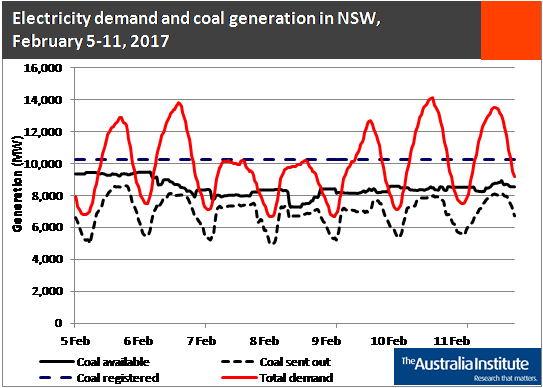The Audit – September Electricity Update
Author
The Australia Institute’s new Climate and Energy Program has released the Electricity Update of the National Energy Emissions Audit (The Audit*) for September 2017, authored by renowned energy expert Dr Hugh Saddler.
The September Electricity Update includes a special analysis of the peak demand events in February 2017 which shows that in addition to coal plants, including Liddell, failing, two out of three of the largest gas generators, Tallawarra and Colongra, dropped out at the most important times for NSW peak load.
“Australia has a peak load problem, not a base load problem,” Dr Saddler said.
“The peak events may not come often but we know they will, and when they did last summer key assets failed to perform. Aging coal plants performed poorly, but just as concerning, and perhaps less expected, was the failure of gas when the heat was on.
“Gas generators performed as expected in the lead up to the peak, but at the crucial time, output from two of the three largest generators, Colongra and Tallawarra, suddenly dropped to zero for an hour or two.
Over the crucial hot days in February, Liddell power station broke down in a range of ways with boiler tube leaks rendering two of the four 500MW units completely out of action. Additionally, at the Eraring coal power station, all of the four 720 MW units were operating significantly below capacity, presumably due to high cooling water temperatures as a result of the hot weather.
“As Australia faces acute power issues in hot weather conditions, forms of energy that rely on cooling systems to function represent a risky option. Gas has been hailed as the answer, by some, to quick-fire peak load response. This assessment bears more scrutiny.
“These failures demonstrate that fossil fuel generators are not a silver bullet to reliability of energy supply. Right when NSW consumers needed them most, important gas and coal generation went missing in action,” Dr Saddler said.

